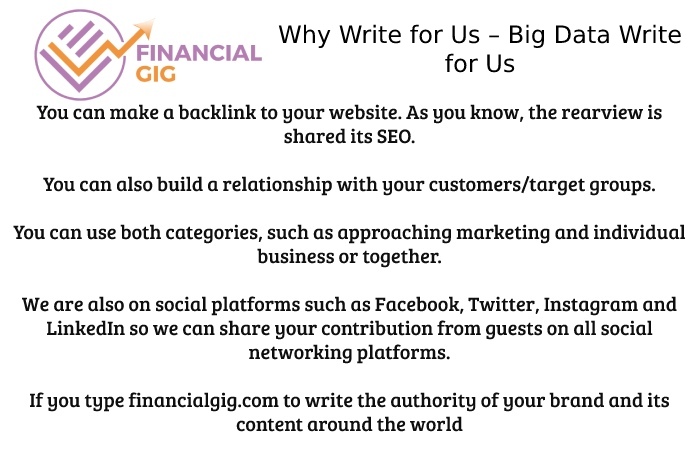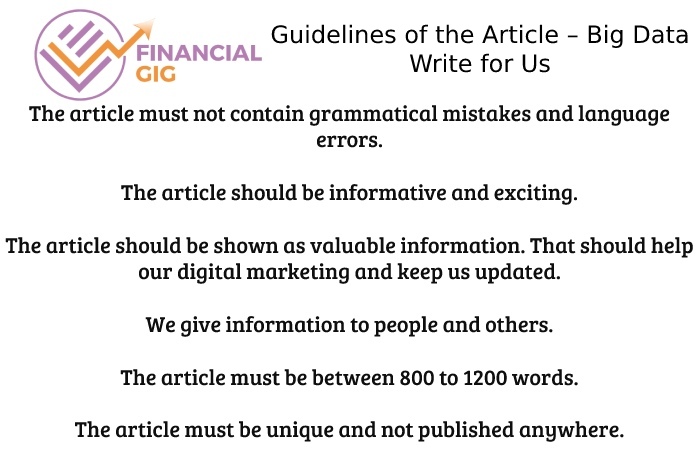Big Data Write For Us
 Big Data Write For Us – Big data is definite as data that is either impractical or impossible to process using conventional techniques because it is so huge, quick, or complicated. Large-scale data access and storage for analytics have been practiced for a long time.
Big Data Write For Us – Big data is definite as data that is either impractical or impossible to process using conventional techniques because it is so huge, quick, or complicated. Large-scale data access and storage for analytics have been practiced for a long time.
Big Data: Why Is It Important?
Big data’s significance is not just dependent on your data volume. Its worth depends on how you utilize it. Any data source may be used to gather information, which can then be analyzed to discover solutions that 1) simplify resource management, 2) boost operational effectiveness, 3) optimize product development, 4) provide new income and growth prospects, and 5) facilitate wise decision-making.
How Big Data Functions
Businesses should consider how big data travels among various locations, sources, systems, owners, and users before using it for them. This “big data fabric,” which combines unstructured and semi-structured data with conventionally formatted data,
What are some instances of big data?
What big data examples are there? Big data is derived from various sources, including customer databases, transaction processing systems, documents, emails, medical records, clickstream logs on the internet, mobile apps, and social networks.
Big data on Google?
Google analyses extensive data to determine what we need from it based on various factors, including search history, locations, trends, and a host of other factors.
Big data life cycle: what is it?
The data life cycle is known as the process by which a specific piece of data moves from being created or captured to being archived and/or deleted at the end of its useful life. Although details might vary, specialists in data management frequently count six or more stages as part of the data life cycle.
How to Update Your Articles?
To Write for Us, you can email us at contact@financialgig.com
Why Write for Us – Big Data Write for Us
 Search Terms Related to Big Data Write for Us
Search Terms Related to Big Data Write for Us
digital currency
medium of exchange
computer network
ledger
strong cryptography
decentralized control
central bank digital currency
market capitalization
Securities
Blockchain
Commodities
Search Terms for Big Data Write for Us
submit an article
guest posting guidelines
become a guest blogger
become an author
submit post
guest posts wanted
suggest a post
guest post
write for us
looking for guest posts
guest posts wanted
contributor guidelines
contributing writer
writers wanted
Guidelines of the Article – Big Data Write for Us
 You can send your article to contact@financialgig.com
You can send your article to contact@financialgig.com
